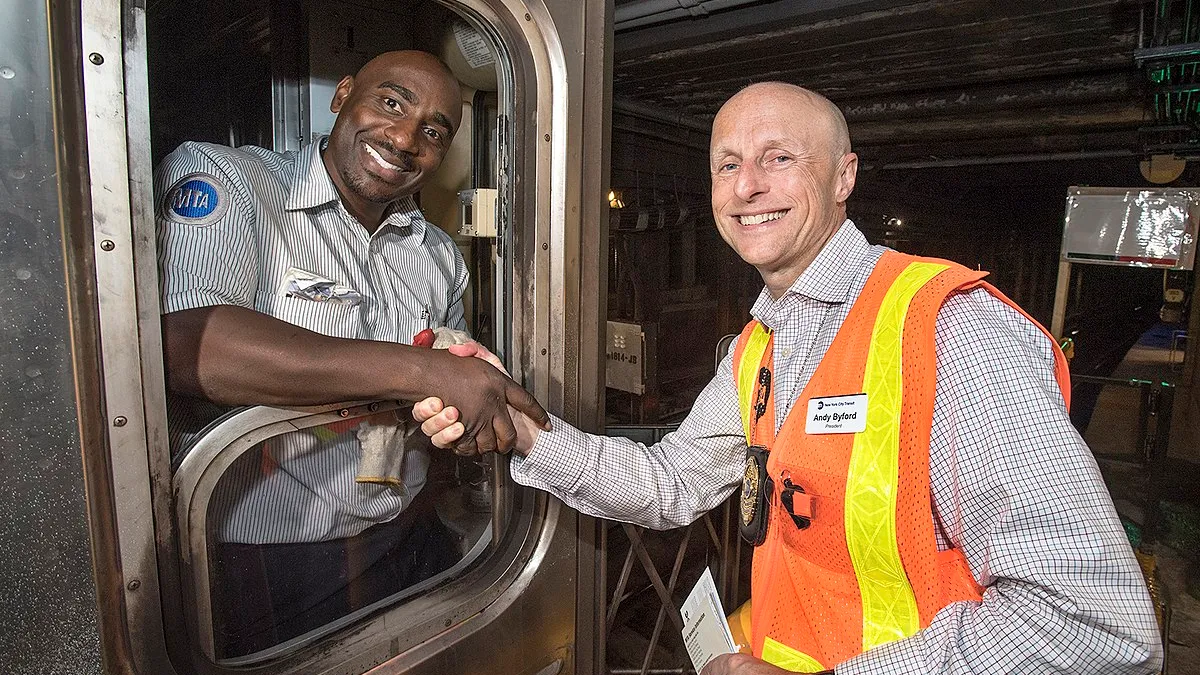Editor's Note: The following is a guest post from Micah Kotch, managing director of URBAN-X.
When news broke of the resignation of Andy Byford, the president of New York City Transit under the Metropolitan Transportation Authority (MTA), New Yorkers publicly mourned the loss of a civil servant in unexpected ways.
A man does not make a movement, but Byford became a symbol: In his two years with the MTA, the commute of the average New Yorker improved in noticeable ways. Average weekday on-time performance in 2019 was 80.3%, a significant increase from 2018 when it was 67.1%. He created a prescient plan to improve services, make transit more accessible and modernize busses and subways. He was a convincing advocate for congestion pricing in one of the most crowded cities in the world — a big first step in transforming how cities can approach tough decisions that, while imperfect, sent a critical message that politics can be navigated to accomplish big things.
Through his work with the MTA, it was clear Byford was a figure whose effective leadership aligned with the values of the city’s residents. He became the civil servant with his own fan-base. In a world where this happens so rarely — both in the public and private sectors — the bold, competent, accountable, people-focused type of leadership exhibited by Byford often felt kismet. It shouldn’t.
Visionary leadership should be a standard all cities share, especially when it comes to solving challenges that impact quality of life. Too often, we let our buildings, transportation systems and roads crumble, forcing governments to play catch up amidst growing complaints. But when improvements to the basic foundations of our cities are made, we, the people, reap the benefits of reduced traffic congestion, more affordable housing, cleaner air, greater government transparency and the sense that our institutions are up to the complex challenges of the 21st century.
In the transportation world specifically, constrained by the unchanging rules of geometry, cities are confronting an entirely new dynamic in the way we get around. Americans lose an average of 97 hours a year due to congestion, amounting to an average of $1,348 in lost productivity per driver. This is putting pressure on cities to take action.
Some cities like New York, Singapore and London are addressing traffic though congestion pricing. Others like Madrid and San Francisco are creating "exclusion zones" to designate car-free streets. Municipal officials, utilities and automakers are increasing investment in electric vehicles and requisite charging infrastructure in anticipation of EVs comprising 57% of global passenger car sales and 81% of municipal bus sales by 2040.
In the wake of the first wave of disruption from players like Uber and Lyft, new shared mobility options are proactively engaging elected officials in the shared goal of reducing emissions and making transportation more cost-effective. (Not to mention the roll-out of autonomous vehicles, free bus service, scooters, and whatever comes next — with wheels or without.)
We should not entirely rely on public officials to design the future we want. Entrepreneurs who are dissatisfied with the status quo can affect positive change in cities, too. Many emerging startups focused on trends like electric ride-sharing or improving road conditions, are helping cities navigate a changing landscape and delivering quality of life benefits to citizens.
As urban areas quickly evolve, we need leaders who embrace change and implement forward-thinking systems to lay the foundation for sustainable growth. We need leaders who will step up to the climate challenge, unafraid to implement solutions that are unfamiliar to most, determined to navigate the politics of doubt, and aspirational in their vision. We need leaders that challenge convention and the status quo, and know how to collaborate, while investing in purpose-built solutions for the 21st century.
All of this is only possible when we have heroes. Andy Byford may be out of the city spotlight, but he is not alone. City agencies and government offices are filled with people with the necessary drive and vision to carry the torch and lead us in the right direction. We applaud those who step up and fight the good fight. We encourage leaders, both public and private, to champion the people and solutions committed to making city life better for all.










